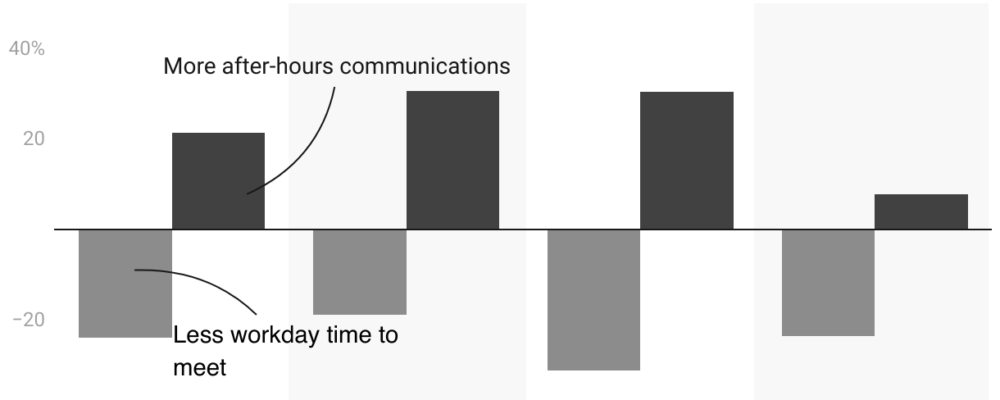As investor pressure mounts on companies to show their environmental impacts, leaders are encountering an unwieldy tangle of terms and approaches. Climate accounting basics and a dictionary of sorts can help demystify the calculations and voluntary targets that companies need to know now, says Michael Toffel, the Senator John Heinz Professor of Environmental Management at Harvard Business School.
Roughly 42 percent of Fortune 500 companies said they’d reached an environmental target or committed to reaching one by 2030, an 11 percent rise from 2021 to 2022, Toffel’s research finds. Several kinds of climate targets have emerged, including terms such as “carbon neutral,” “science based,” “net zero,” “real zero,” and “carbon negative.”
While leaders setting climate goals might gravitate toward the term of the moment, their progress in reaching them will soon become more visible to concerned investors, activists, and customers. The European Union’s Corporate Sustainability Reporting Directive (CSRD) requires large publicly-listed companies in Europe to annually disclose their greenhouse gas emissions, starting in 2025.
“A growing number of managers need to understand the basic vocabulary of decarbonization.”
And the US Securities and Exchange Commission adopted new rules recently that will require major US publicly-listed companies to share on a yearly basis their climate risks and their greenhouse gas emissions, if it survives ongoing legal challenges. These laws and regulations raise the stakes for companies’ climate mitigation efforts by increasing company stakeholders’ ability to track their emissions trends and see who’s meeting and who’s missing their reduction targets.
“A growing number of managers need to understand the basic vocabulary of decarbonization, which refers to efforts to reduce the greenhouse gas emissions of companies and products,” explains Toffel. “This includes a number of choices about where to draw the boundaries for measurement and which type of greenhouse gas reduction target to set.”
Toffel, who hosts the HBS Climate Rising podcast, partnered on the research with Willy Shih, the Robert and Jane Cizik Professor of Management Practice at HBS; and former HBS research associates Kelsey Carter and Stephanie van Sice. In March, Toffel launched an HBS Online course called Business and Climate Change with Forest Reinhardt, the John D. Black Professor of Business Administration; a new cohort begins every few months.
First, a math lesson
Many firms use the Greenhouse Gas (GHG) Protocol developed by the World Resources Institute and World Business Council for Sustainable Development to calculate their emissions impact.
The approach results in a metric called “carbon dioxide equivalent,” or CO2e, which is a unit of measure that reflects the weighting of various greenhouse gasses to reflect their “global warming potential” compared to the same quantity of carbon dioxide would cause. Even a decade ago, 92 percent of Fortune 500 companies had already begun using this methodology to calculate their emissions in three categories.
Carbon accounting
Scope 1: GHG emissions that come directly from sources that a firm or group controls or owns, such as vehicles or boilers.
Scope 2: Emissions tied to a company’s use of energy, such as electricity from power plant, and steam or hot water from district energy systems.
Scope 3: Indirect emissions from a company’s supply and value chains. This includes the emissions associated with producing the materials a company procures, along with the distribution of those materials and the company’s products, employee commuting, and business travel. Scope 3 also includes emissions generated by the company’s products.
Lifecycle assessment: Companies can often calculate their Scope 1 and 2 emissions based on invoices that state how much natural gas, oil, and electricity they consume and conversion factors to translate these into GHG emissions. But to calculate their Scope 3 emissions for materials and components they procure, not all suppliers are willing or able to share this information.
“LCAs tend to be quite comprehensive.”
Instead, companies can turn to a lifecycle assessment, which refers to a study that includes all phases of a product’s lifespan, from the extraction of raw materials to the product’s end-of-life disposition such as landfill, incineration, or recycling. Lifecycle assessments can be stand-alone studies or embedded into off-the-shelf tools.
“LCAs tend to be quite comprehensive. They include not just GHGs, but other environmental resources like water requirements and other pollutants you might care about as well,” Toffel says. The researchers outline how some software programs and data work so managers can “put it into practice.”
Then, what target makes sense?
Toffel says that leaders should ask themselves: “Are we aiming for net zero like so many other companies? Are we aiming for products that are going to be carbon neutral? Are we instead going to go with the Paris Agreement framework, which uses science-based targets?”
Carbon neutral and net zero targets. These targets mean that a company intends to counterbalance the greenhouse gasses it emits by implementing greenhouse gas emission reduction strategies, and then purchasing “carbon credits” to offset the remaining “residual emissions.”
While most companies include Scope 1 and 2 emissions in these targets, they vary in terms of whether or how much of their Scope 3 to include. Carbon neutral targets tend to refer to just carbon dioxide emissions, whereas net zero targets tend to also include other GHGs like methane and nitrous oxides and are thus more comprehensive.
To help reduce difficulty comparing targets that companies self-define, some common standards have emerged, including ISO 14064-1 for carbon neutrality and the Corporate Net Zero Standard by the Science-Based Targets Initiative (SBTi).
Science-based targets. Science-based targets (SBTs) refer to company-specific targets sanctioned by the SBTi, an organization created in 2015, and validated by third-party organizations. Companies with SBTs have committed to reduce their emissions by certain amounts by 2030, often by 50-to-60 percent to align with the global goal of limiting the world’s temperature to within 1.5 degrees Celsius of pre-industrial levels, a concept popularized by the Paris Agreement in 2015. Companies with SBTs also need to set nearer term targets and issue periodic progress reports.
Real-zero targets. Real-zero targets—also known as absolute zero or true zero—refer to companies committing to the total elimination of the greenhouse gas emissions from their operations and value chains, including all of their Scopes 1 to 3 emissions and without using carbon credits. This type of target is currently quite rare, given technological and economic barriers.
Carbon-negative targets. A company setting a carbon-negative target commits to creating a net reduction of greenhouse gas concentrations in the atmosphere. It achieves this by reducing its own emissions, and then engaging in activities or purchasing carbon credits that reduce or remove more than their own residual emissions. This approach is also known as “climate positive.”
While it appears to be the most aggressive type of target, the researchers write that, “a lack of guidelines or independent oversight” raise questions of accountability and transparency, which can be especially problematic given the Wild West nature of carbon credits, a topic Toffel has written about in the Harvard Business Review with Varsha Ramesh Walsh.
You Might Also Like:
Feedback or ideas to share? Email the Working Knowledge team at hbswk@hbs.edu.
Image: Illustration by HBSWK, with images generated by artificial intelligence tools, Midjourney and Adobe Firefly
“Harvard Business School is the graduate business school of Harvard University, a private research university in Boston, Massachusetts. It is consistently ranked among the top business schools in the world and offers a large full-time MBA program, management-related doctoral programs, and executive education programs.”
Please visit the firm link to site




